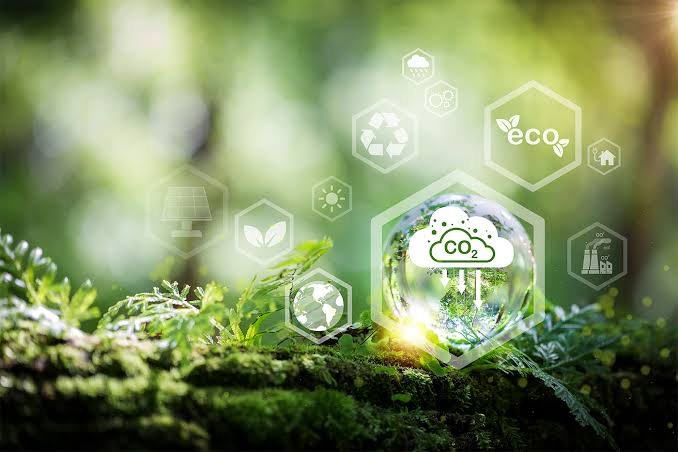In the present era, the pharmaceutical companies are facing repetitive pressure to adopt sustainable and environmentally friendly practices. As we are the part of society that is highly concerned about climate change, resource depletion, and the impact of chemical waste. One of the most promising areas of innovation in this regard is the field of “green synthesis” for the production of Active Pharmaceutical Ingredients (APIs). This incredible and unique trend combines the principles of green chemistry with pharmaceutical manufacturing with a huge perspective of improving the sustainability of API synthesis processes.
The use of green synthesis technology can help the API production by helping in reducing waste, minimising the use of toxins, and enhancing the overall productivity, that eventually leads to a more efficient, sustainable and cost friendly pharmaceutical industry.
This article unfolds the various concepts of green synthesis, its importance in API production, and advancements in improving sustainability within the Pharma sector. Also, it provides a general overview of principles of green chemistry, the role of green synthesis in API production, and some of the emerging techniques that are transforming pharmaceutical manufacturing.
Understanding Green Chemistry and Its Importance
Green chemistry is an era of science that emphasizes the development and designs that are environmental friendly, energy efficient and pocket friendly. It aims to reduce each and every negative impact of chemical manufacturing on humans as well as the environment. There are some of the key principles of green synthesis postulated by “Paul Anastas and John Warner” in year 1998, that states:
1. Preventing waste – It is always better to prevent the generation of waste than cleaning it up later.
2. Maximizing atom economy – Chemical processes should be designed to maximize the incorporation of all materials used in the process into the final product.
3. Less hazardous chemical syntheses – Chemicals used in reactions should be chosen to minimize toxicity.
4. Designing safer chemicals – Chemicals should be designed to be effective yet less harmful to human health and the environment.
5. Safer solvents and reaction conditions – The use of safer solvents and reaction conditions is essential to reduce the risks posed by chemicals.
The Role of Green Synthesis in Active Pharmaceutical Ingredient (API) Production
APIs are the active components in a medicine that provide therapeutic effects. The formation of APIs generally involve complex chemical reactions, and these processes generate a huge amount of chemical waste, more energy, and involvement of toxic reagents and solvents.
The traditional methods of API production are evidently costly and are harmful for both environmental and human health.
Green synthesis, for API production, finds the solutions for these challenges by various eco-friendly techniques that make the synthesis process sustainable and more efficient for mankind.
Key Benefits of Green Synthesis in API
Production
The incorporation of green chemistry principles into API production processes offers several key benefits. Such as:
1.Reduced Environmental Impact – Green synthesis techniques emphasis more on the use of renewable resources and deteriorates waste management. By introducing new and more efficient catalytic processes, reducing the use of harmful agents, and absolute removal of solvents.
These are a few ways pharmaceutical manufacturers can reduce the negative impact of manufacturing on the environment.
2.Improved Efficiency and Yields – Green synthesis approaches lead to more efficient reactions that not only increase the productivity of the API but also eliminates the unnecessary steps. This is how manufacturers can be benefited with higher productivity with lesser resources.
3.Cost Savings – This technique may involve upfront investment in implementing and executing new technologies and processes. However, in the long term the benefits like reduction in waste disposal cost, use of less expensive reagents, and better reaction products result in evident cost savings for manufacturers in the pharma sector.
4.Regulatory Compliance – Government is also seeking the industries that compose or produce lesser damage to the environment during the manufacturing process. The acceptance of green synthesis in API production can aid companies comply with waste management related regulations, and also with the use of hazardous materials.
5.Health and Safety – This technique promotes the usage of safer chemical reactions which helps to maintain a sustainable environment and also the safety of workers working in that firm.
Advancements in Green Synthesis for API Production
Following are the innovations and techniques that play a crucial role in this transition:
1.Catalysis and Biocatalysis – Catalysis and more evidently biocatalysis is one of the most crucial advancements in green synthesis for API production. Catalyst is nothing but an agent that accelerates the rate of reaction without actually being consumed in the reaction. It helps to execute more efficient reactions with lower energy resources invested in it.
Biocatalysis is the process of involving the use of natural catalysts such as enzymes in a reaction. Biocatalysis becomes a highly appropriate choice since enzymes can easily be operated under mild conditions.
2.Solvent-Free and Green Solvent Systems – The usage of solvents is a major source of pollution in traditional methods of chemical synthesis. In green synthesis researchers are focused on developing a solvent free process or using green solvents that will be less toxic, biodegradable and derived from renewable sources. For example: Supercritical fluids (such as supercritical CO2).
3.Microwave and Ultrasound-Assisted Synthesis – This technology promotes faster and better chemical reactions. The technique is helpful in enhancing the rate of chemical reaction by providing localized heating and increased mass transfer.
4.Flow Chemistry – Flow chemistry includes the continuous flow of reactants via a reaction chamber. This technique provides a better control over reaction conditions yielding huge results in lesser time. Also, this system is more scalable and can be automated making it a great choice for large scale production.
5.Green Reagents and Reactions – Green chemistry is an encouragement of reagents that are less toxic and more environment friendly.
6. Waste Minimization and Recycling – Green synthesis technique results in lesser waste during API production. It involves optimization of reaction conditions to pacify the by-products and incorporating strategies for recycling solvents, reagents and other materials. This makes green synthesis an excellent pick for the safety of the environment and humans.
Conclusion
Green synthesis represents a very unique and terrific approach to API production that helps the pharmaceutical companies to attain sustainability and environmental responsibility.
By adopting the green chemistry companies can not only benefit the environment but also mankind by producing high quality APIs with low waste production and improved reaction efficacy.
Sustainable API Manufacturing with Green Chemistry at Globela
At Globela, we are committed to green chemistry principles in API manufacturing, ensuring sustainability without compromising quality and efficiency. Our approach integrates eco-friendly processes, resource optimization, and innovative technologies to minimize environmental impact.
🔹 Solvent Recovery & Recycling – Reducing waste by efficiently recovering and reusing solvents.
🔹 Process Optimization – Implementing advanced methods to enhance yield and minimize by-products.
🔹 Energy-Efficient Manufacturing – Using sustainable energy solutions to lower our carbon footprint.
🔹 Water Conservation Initiatives – Optimizing water usage through advanced recycling techniques.
🔹 Minimized Hazardous Waste – Adopting greener reagents and safer chemical alternatives.
As a responsible API manufacturer, we continuously innovate to align with global sustainability goals while delivering high-quality, cost-effective pharmaceutical solutions.
Let’s build a greener future together! Connect with us to explore collaborative opportunities in sustainable pharma manufacturing.


